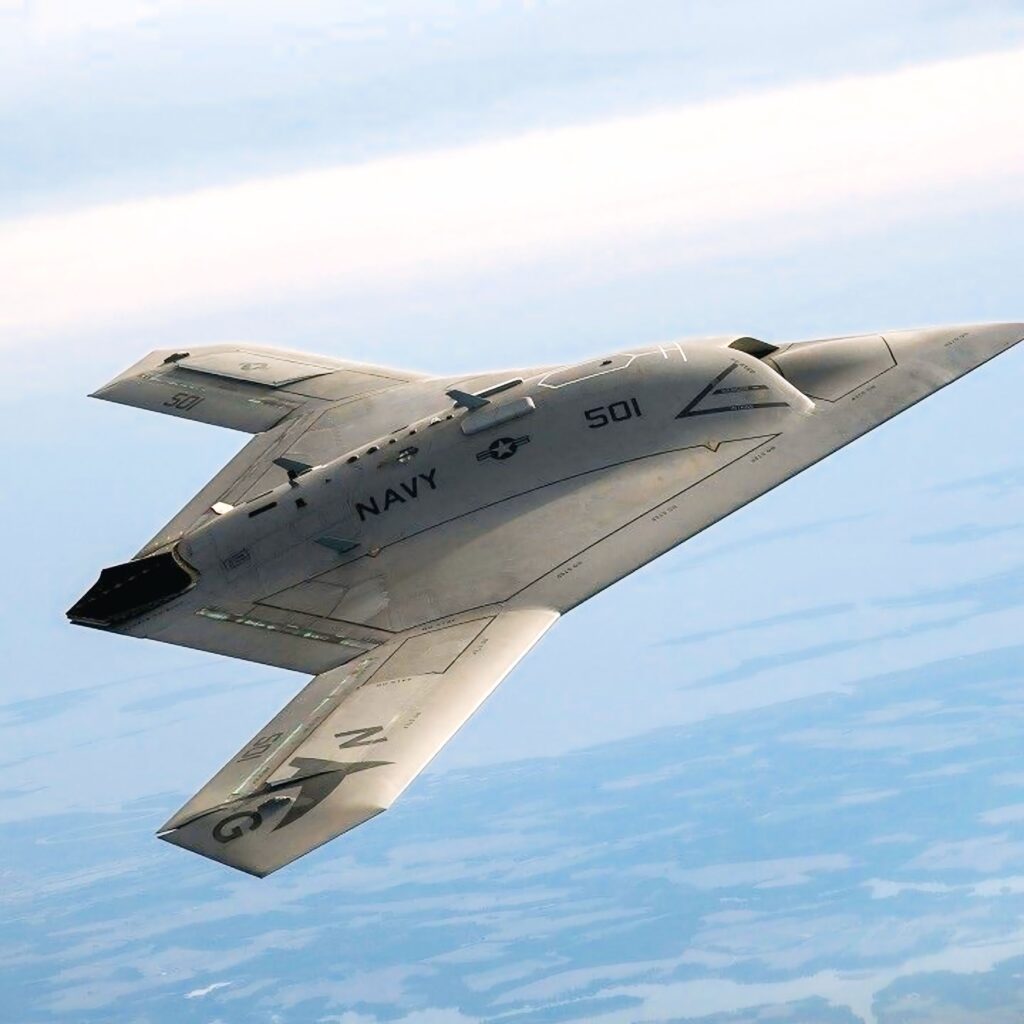
The Northrop Grumman X-47B is a pioneering unmanned combat air vehicle (UCAV) developed for the United States Navy. As one of the first carrier-based drones designed to operate autonomously from an aircraft carrier, it represents a major leap in the integration of unmanned technology into naval aviation. The X-47B’s development demonstrated that aircraft without a pilot onboard could safely take off from, operate around, and land on a moving aircraft carrier—an achievement once thought impossible.
The X-47B program began as part of the U.S. Navy’s Unmanned Combat Air System Demonstration (UCAS-D) initiative, launched in the early 2000s. Northrop Grumman was awarded the contract in 2007 to develop and build the aircraft, and the first prototype made its maiden flight in 2011. With its sleek, tailless “flying wing” design, the X-47B has a futuristic look similar to the B-2 Spirit stealth bomber. This design enhances its stealth characteristics by minimizing radar cross-section, making it more difficult to detect and track.
The aircraft has a wingspan of about 62 feet and is powered by a single Pratt & Whitney F100-PW-220U engine, giving it subsonic speed and a combat radius of roughly 2,100 nautical miles. It can carry up to 4,500 pounds of ordnance in internal weapons bays, which helps preserve its stealth profile. While the X-47B was never intended for active combat, its capabilities were designed to test technologies that could one day be used in operational unmanned aircraft.
One of the program’s most significant achievements came in May 2013, when the X-47B successfully launched from the USS George H.W. Bush (CVN-77) using a catapult system and later made arrested landings aboard the same carrier. These tests proved that unmanned aircraft could integrate with the complex operations of carrier aviation. The X-47B was also capable of autonomous aerial refueling, a milestone reached in 2015 when it successfully connected with a tanker aircraft mid-flight. This demonstrated the potential for extended range and endurance in future unmanned systems.
Beyond its technological milestones, the X-47B helped the Navy explore how autonomous aircraft could work alongside manned aircraft. It operated in the same airspace and followed the same procedures as crewed jets, relying on advanced software and sensors for precision and safety. This collaboration paved the way for concepts of “manned-unmanned teaming,” where human pilots and drones operate together to enhance mission effectiveness.
Although the UCAS-D program concluded in 2015, the X-47B’s legacy continues. The data and experience gained from its testing have directly influenced future programs like the MQ-25 Stingray, the Navy’s first operational carrier-based unmanned tanker. Lessons learned from the X-47B also contribute to broader defense efforts to develop stealthier, more capable autonomous aircraft for surveillance, strike, and electronic warfare missions.
In summary, the Northrop Grumman X-47B was a groundbreaking step toward the future of naval aviation. By proving that autonomous aircraft can safely operate from aircraft carriers and perform complex tasks, it laid the foundation for the next generation of unmanned combat aircraft that will likely play a central role in 21st-century warfare


